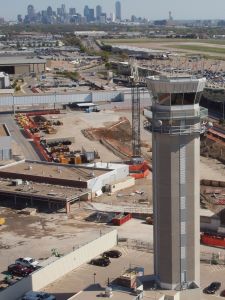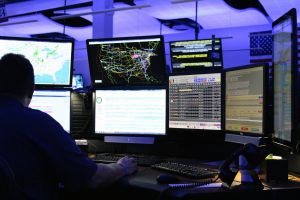- Subscribe to RSS Feed
- Mark as New
- Mark as Read
- Bookmark
- Subscribe
- Printer Friendly Page
- Report Inappropriate Content
10-02-2014
03:15 PM

The airspace over the United States are composed of a complex system of highways in the sky, navigational aides, and boundaries, all of which are coordinated by the Federal Aviation Administration (FAA). For more than 85 years, professionals both on the ground and in the air have worked together to ensure the Safe and efficient flow of aircraft throughout the National Airspace System (NAS) 24 hours a day. As demand for air travel has grown, so have the intricacies of the system. The First Air Traffic Control Facility A need for ground-to-air guidance was first identified in the late 1920s. During this time, Charles Lindbergh completed his historic journey across the Atlantic, and aircraft began to gain additional capacity for both cargo and passengers. At the St. Louis airport a pilot and mechanic by the name of Archie League established the world’s first air traffic control facility–all from the comfort of his wheelbarrow. Archie used it to carry an umbrella, chair, and some signal flags that he used to let pilots know when it was safe to go and when to yield the right of way.

Love Field’s new 155-foot ATC Tower, with panoramic views of downtown Dallas, as well as construction of our new 20-gate terminal as part of the Love Field Modernization Program.
 our Network Operations Control (NOC) Center file flight plans that make best use of the air traffic system and stay in close contact with Pilots to make adjustments when needed. In addition, we also have licensed Dispatchers serving as Air Traffic Control Specialists, who participate in ongoing coordination with the FAA’s command center and provide guidance to other NOC Employees on how to best adjust our operation based on the highly dynamic factors that impact each day’s unique circumstances.
Air Traffic Control has come a long way from the days of Archie’s portable control tower to what keeps us Safe today. And future technologies promise to provide additional efficiencies as we move from the radar system currently in use to a satellite-based environment that will contribute to even safer skies.
our Network Operations Control (NOC) Center file flight plans that make best use of the air traffic system and stay in close contact with Pilots to make adjustments when needed. In addition, we also have licensed Dispatchers serving as Air Traffic Control Specialists, who participate in ongoing coordination with the FAA’s command center and provide guidance to other NOC Employees on how to best adjust our operation based on the highly dynamic factors that impact each day’s unique circumstances.
Air Traffic Control has come a long way from the days of Archie’s portable control tower to what keeps us Safe today. And future technologies promise to provide additional efficiencies as we move from the radar system currently in use to a satellite-based environment that will contribute to even safer skies.
You must be a registered user to add a comment. If you've already registered, sign in. Otherwise, register and sign in.